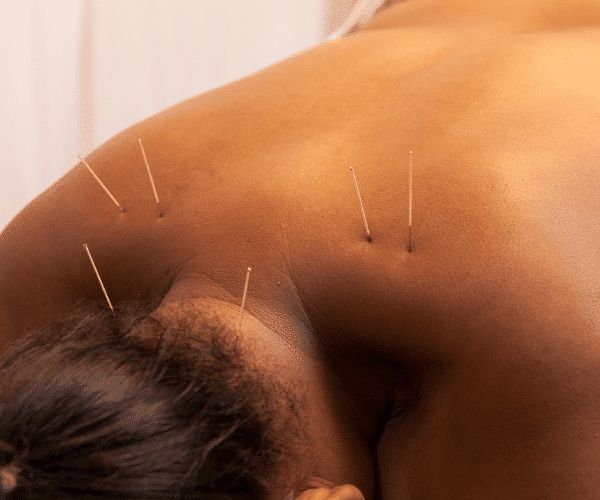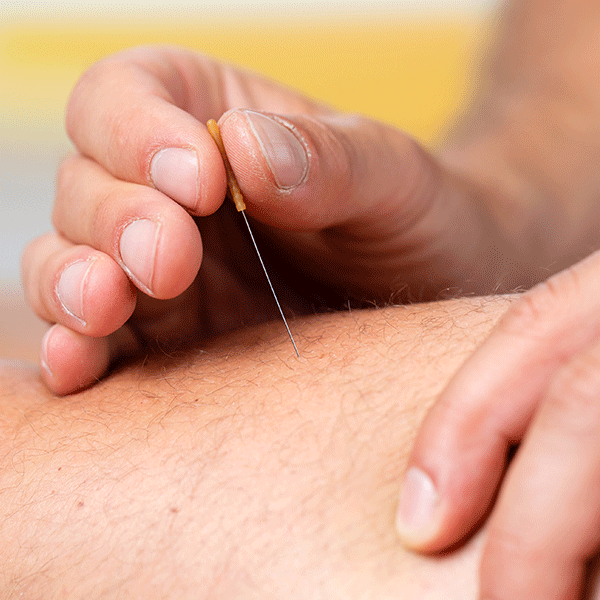Dry Needling
Do you regularly suffer from sore or stiff muscles? Then dry needling can be an effective way to experience quick relief from your symptoms. You’ll notice this after just a few minutes during the first treatment. Dry needling is also successfully used for pain relief in shortened muscles and muscles that recover poorly after an accident or surgery.
Ask your question here
What is dry needling?
Dry needling, sometimes also intramuscular stimulation (IMS), is a treatment method that involves poking a needle into thickenings of a muscle. It is an important part of physiotherapy and a treatment method for fast pain relief. The treatment is applied, among other things, for the treatment of myofascial pain syndrome, stiffness, and muscle pain.
Dry Needling is very effective when:
- You have pain in a muscle.
- You have difficulty moving.
- You experience reduced strength in your muscles.
- You experience pain and alter your movements to avoid that pain.
- You experience tingling sensations in your arms or legs.


Pins with a thin needle.
This is good and what we’re looking for. The intention is for the muscle to release and completely relax afterwards. Usually, you feel this relaxation immediately, but it can also occur a little later.
Pins with a thin needle.
During the treatment, the muscle is stimulated with a thin needle. This needle is so thin that one hardly feels it penetrating the muscle. When the needle is in the muscle, it is moved back and forth until the body responds with a reflexive contraction of the muscle; this is called a local twitch response.
This is good and what we’re looking for. The intention is for the muscle to release and completely relax afterwards. Usually, you feel this relaxation immediately, but it can also occur a little later.

Relaxed muscles
After a treatment, the muscles relax because they are no longer in a shortened state. The blood flow increases, which can improve mobility in the adjacent joints. Pain decreases and muscle and joint function increases.
Dry Needling is not acupuncture.
Dry needling is not acupuncture and, unlike acupuncture, has no energetic framework and does not use meridians to determine the points of needling.
Dry needling is not quackery.
Dry needling is not quackery and provides an immediate measurable result. However, it does not address the underlying issue. Therefore, our physiotherapist will also work with you to identify the cause of your stiff muscles and knots. This ensures that you continue to benefit from our treatment in the long term.
